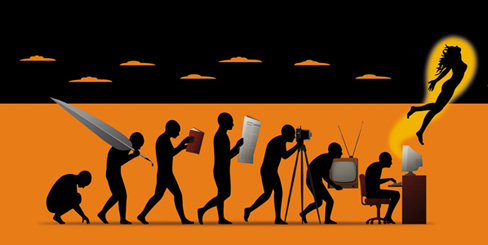
At the Toronto Summit's concluding press conference, U.S. President Barack Obama said that the G20 is now the premier forum for international economic cooperation (Photo by Paula Millar)
TORONTO, ON— Just one day removed from the G8 and G20 meetings of June 2010, affords some fresh perspectives on Canada’s three-day whirl-wind summit. For one, the much-talked-about “fake lake” and one-billion dollar security tab now seem irrelevant. While many of the weekend’s more popular headlines tell tales of “Black Bloc” rioters and Toronto’s tarnished global image, inside the International Media Centre and, more importantly, in the boardrooms of G20 meetings, the tumultuous streets were grossly insignificant.
Well before the world’s most powerful leaders arrived on Canadian soil, the agenda for discussion seemed displaced with concerns of over-run costs and security. However, in retrospect, any attempt to amass an all-encompassing picture must focus on the content and outcomes of the meetings that took place, rather than the widely publicized images of protestors and riot police or the lakeside scenery in the International Media Centre.
Contrary to popular belief, as G8 member countries arrived in Huntsville, Ontario, they weren’t in for a typical cottage-country jaunt. Instead, maternal health in Sub-Saharan Africa, North Korean hostility and Iranian nukes, amongst others, were on the to-do list. If that schedule appeared daunting, what awaited world leaders in Toronto was no comparison.
As the group ballooned to 20, and the focus shifted from development to economics, the global issues up for debate got more complex. Shielded from protestors and the media’s spotlight, the G20 leaders spent Sunday hashing out plans in the Metro Toronto Convention Centre – a modern-day bunker in the heart of the city.
The three days of meetings took place behind closed doors. While affording the politicians unprecedented privacy to get down to business, the jilted television media defaulted to constant coverage of ongoing demonstrations. This allowed them to fill the dead air between steady, pre-packaged press briefings quite nicely. Meanwhile, in the International Media Centre, most sleep-deprived journalists lounged on Muskoka chairs while taking in World Cup play. In fact, outside of a handful of heavily-restricted media outings, the press’s only opportunity to venture into the convention centre for live G20 action was not until Sunday evening.
After a security check that would put any airport to shame, and under heavy police escort, journalists were bussed through eerily empty downtown streets, and afforded an opportunity to witness what one billion dollars in security can buy. After negotiating a maze of fences, busses arrived at the convention centre – the press’s opportunity to refocus on G20 issues.
Late Sunday, as Canadian Prime Minister Stephen Harper addressed the media he spoke of successes and firm targets for the G20’s November 2010 meeting in Seoul, South Korea. Most notably Harper spoke of a “50 per cent debt reduction by 2013 and a debt-to-GDP ratio that should be on a downward trend by 2016.” On the controversial topic of bank levies, he explained that such a decision will be left to the discretion of individual countries – to the joy of Canadian bankers. Following Harper’s lead, American President Barack Obama commended the G20’s emergence as “a premier forum for economic cooperation.”
The G8 and G20 Summit came at a pivotal point for Canada. As the United States and Japan struggles to combat deficits, the Canadian economy appears resilient. As the United Kingdom experiments with minority rule for the first time in years, Canada’s minority government appears strong. Finally, as the world’s banking sector begins to rebuild after last year’s bailouts, Canada’s once boring banking world is now a symbol of success. While protesters may have defaced Toronto’s streets, Canada’s international image, and the success of the world summits do not appear to have suffered the same fate.








